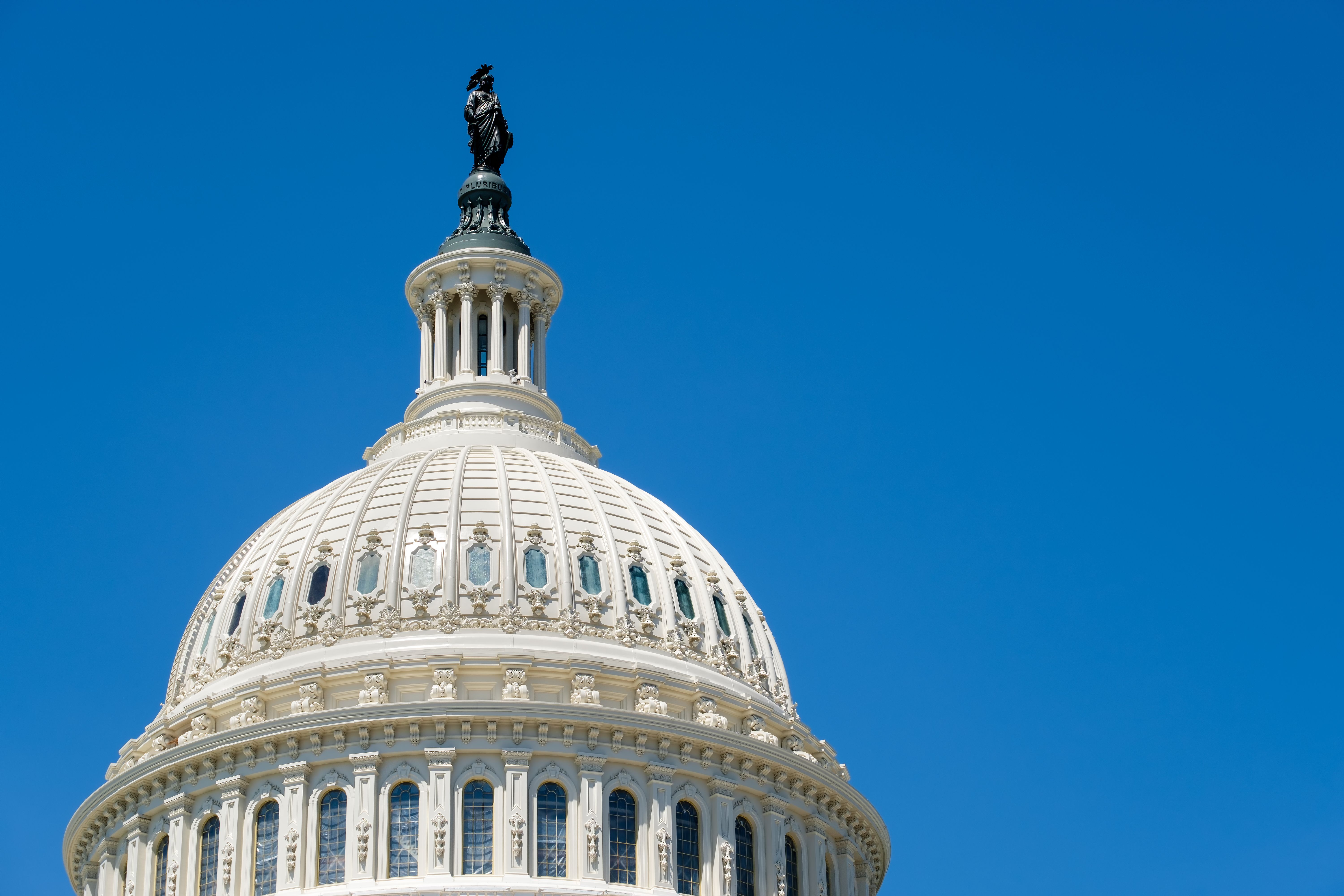Telehealth extension bill moves forward in Congress, but clock is ticking
The House Energy & Commerce Committee has passed the legislation, but some key provisions for telehealth are slated to expire at the end of the year.
It has taken longer than some healthcare advocates would like, but a measure to extend key telehealth programs is moving forward in Congress.
The House Energy and Commerce Committee unanimously approved a bill to extend telehealth programs. Some telehealth flexibilities are slated to expire at the end of the year.

This week, the House & Energy Commerce Committee passed the Telehealth Modernization Act with more than bipartisan support. The committee approved the measure unanimously with a 41-0 vote Wednesday, along with a host of other health bills.
The bill (H.R. 7263) continues many telehealth flexibilities for an additional two years, through the end of 2026. The legislation would also provide a five-year extension for hospital-at-home programs.
Kyle Zebley, senior vice president of public policy for the American Telemedicine Association, hailed the unanimous vote for the bill.
“We owe a great debt of gratitude to our telehealth champions in the House for their unwavering and ongoing support of telehealth and to bringing needed care to the American people, especially those in underserved communities,” Zebley said in a statement this week.
Republicans and Democrats sponsored the bill. U.S. Rep. Earl L. “Buddy” Carter, R-Ga., one of the prime sponsors of the legislation, is hoping the full House of Representatives will vote to approve the bill sooner than later.
“Seniors, individuals with mobility issues, and those living in rural areas rely on telehealth to bring qualified health care professionals right to their home,” Carter said in a statement. “I urge a swift House floor vote on this bill, so that we can get Medicare beneficiaries the life-saving health care they need.”
After the House acts, the Senate would have to approve the legislation.
Health policy analysts have said that they expect Congress to extend telehealth provisions, which were first enacted in response to the COVID-19 pandemic. But some also said they worried Congress may not act too quickly this year, especially with most lawmakers running for re-election this fall.
In a June interview with Chief Healthcare Executive®, Zebley projected that Congress may not get the bill to President Biden’s desk until late in the year, and it appears that forecast is accurate.
“It's going to get done,” Zebley said in June. “It's just going to really be stressful in the act of getting done.”
U.S. Rep. Lisa Blunt Rochester, a Delaware Democrat, said the expansion of telehealth has been “one of the few positive outcomes of the COVID-19 pandemic,” and she hopes the extension is enacted as soon as possible.
“We are one step closer to ensuring that anyone who needs these services, especially seniors, those with disabilities, and people living in rural areas, can access the care they need when it’s most convenient for them, all while lowering prescription drug costs,” Rochester said in a statement.
Some healthcare advocates were hoping to see permanent telehealth reforms, but they acknowledged another extension of flexibilities would be more likely.
“Although we believe these provisions should be permanent, we understand the current dynamics and support a two-year extension,” Zebley said in a statement.
Healthcare leaders are particularly happy for the five-year extension for hospital-at-home programs. As of Sept. 17, 345 hospitals are offering acute care at home in 39 states, according to data from the Centers for Medicare & Medicaid Services.
Telehealth advocates are also pressing for the approval of extensions allowing the remote prescription of some controlled substances, such as Oxycontin and Xanax.
The Drug Enforcement Administration and the Department of Health & Human Services agreed last year to a temporary extension allowing for telehealth providers to write prescriptions for some controlled substances, but that provision expires at the end of 2024. The American Telemedicine Association is urging Congress to push the DEA and health department for an additional two-year extension of remote prescriptions.
“If left unaddressed, this issue could create dire consequences,” Zebley said in a statement.
Patient usage of telehealth has dipped recently, but it remains far more popular than before the COVID-19 pandemic. In 2022, 30% of adults engaged in telehealth, down from 37% in 2021, according to the Centers for Disease Control and Prevention.
However, analysts continue to see strong demand for telehealth options in some areas, particularly behavioral health.
Nancy Howell Agee, CEO of Carilion Clinic, touted the value of telehealth this week at an event held by The Coalition to Strengthen America’s Healthcare and Politico. Agee, the chair of the coalition, talked about the system’s expanded use of telehealth.
“The pandemic just put a huge catalyst into that. Suddenly we were doing tons of telehealth-care throughout our whole region,” she said.
Carilion employs several doctors across the country who are full-time virtual physicians. “They never see a patient in person,” Agee said. “They do everything through telehealth.”
She also pointed out that telehealth can reach more remote communities, as well as help seniors and those with disabilities who can’t easily visit a doctor in person, even if the clinic is close.
“When you think about telehealth, it’s not just to reach into rural areas, though that’s critically important. It’s also what we can do in general,” she says.
“I think telehealth is just a real gift to the way we do healthcare delivery today,” she says.
The American Telemedicine Association is also pressing Congress to approve a bill (HR 824) that would expand access to virtual care for workers by allowing employers to offer stand-alone telehealth benefits to all employees.
Read more: How hospitals and health systems could do more with telehealth
Healthcare leaders: Prepare for a very different HIPAA security rule | Viewpoint
April 20th 2025The proposed changes to the HIPAA Security Rule are significant. Executives and boards need to prepare as the days of voluntary compliance end and a new era where leaders are held personally accountable emerges.